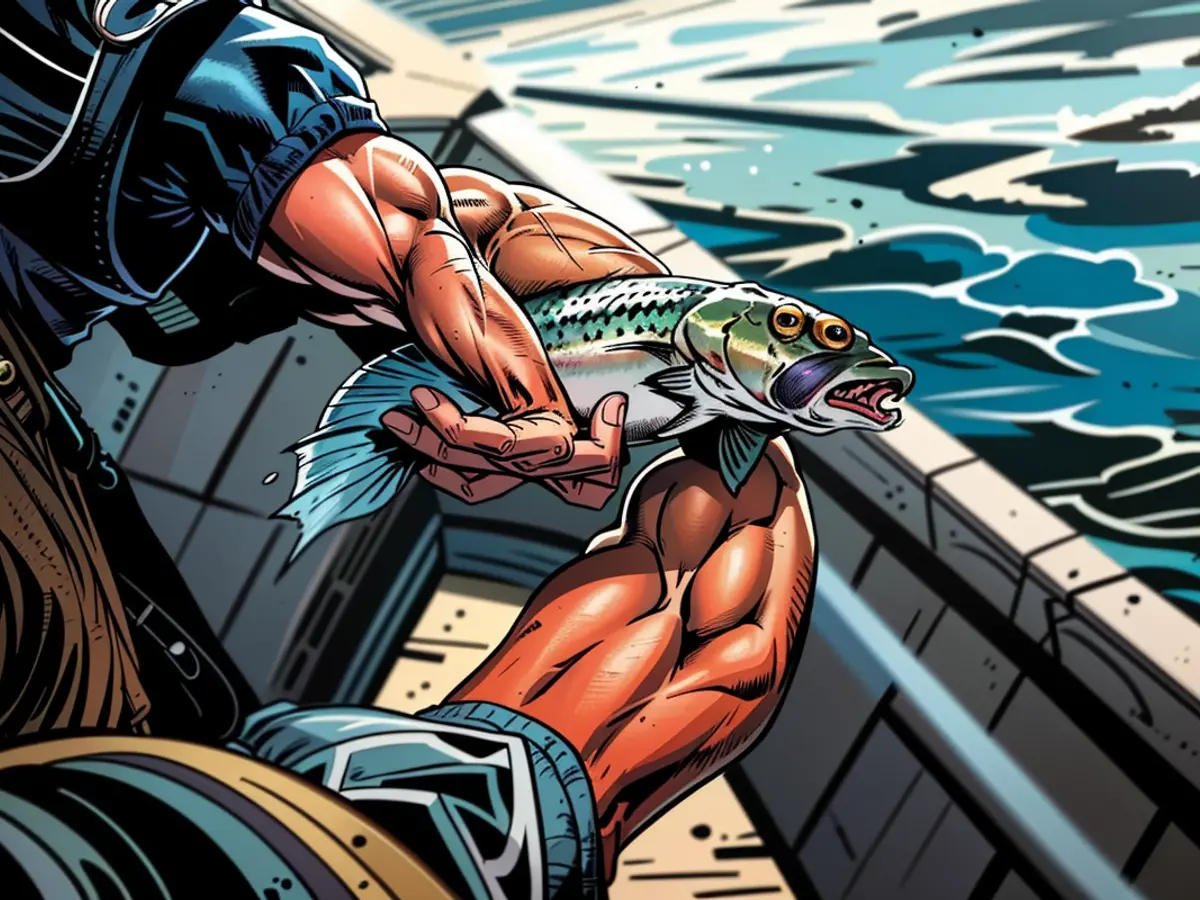Bread fish of the Lake Constance fishermen - Study: whitefish suffer from higher water temperatures
Rising water temperatures, according to a study for Bodensee-Fish (Perch), can be threatening for their populations. Biologists from the Fisheries Research Station Baden-Württemberg in Langenargen and the University of Konstanz have now shown that the mortality of Perch larvae increases with rising temperatures. To prove this, they examined the development of Perch eggs and larvae at different water temperatures.
Perch hatch too early
The larvae of cold-loving Perch would hatch significantly earlier at higher temperatures - "not as usual in February, but perhaps already at the end of January", explained the researchers. This "early hatch" could be problematic because at this time, there may not be enough food organisms present yet. "Additionally, a higher mortality rate of the eggs could be observed, as these have to fight a higher infestation of microorganisms in warmer water."
For successfully hatched larvae, the struggle for survival continues. Normally, they are well supplied with a yolk sac at first, a small built-in food reserve. However, at higher temperatures, this reserve is consumed disproportionately quickly – which also reduces their survival chances.
Bodensee is getting warmer
In deep water, where the Perch eggs develop and the larvae hatch, water temperatures have already exceeded values that were originally predicted for the year 2040. "Even in shallow water, where the roach spawn, it is today about one degree warmer than usual."
According to an evaluation of the Sea Research Institute Langenargen, the temperature in the deep water, on average, was 5.4 degrees in 2023. That's a new record. Ten years ago, it was still 4.3 degrees. The temperature is increasing from year to year.
In 2022, the temperature in this inland water body reached a maximum annual average of 14.1 degrees at the water surface. The Sea Research Institute Langenargen of the State Environment Agency Baden-Württemberg (LUBW) has been measuring the water temperature in the lake since 1962. Back then, the average temperature was still 10.5 degrees.
It is also feared that adult Perch will no longer swim into the shallow, light-flooded areas at the lake surface in the summer, where they normally feed on water fleas, due to the excessively warm water. This would separate them from their food.
Man must help Perch
Perch, according to the researchers, are not only a symbol of the Bodensee region and a prized delicacy: "As a keystone species of free water, they are also of immense importance for the functioning and resilience of the entire ecosystem."
The changes caused by the climate crisis are happening so quickly from a geological perspective that the natural adaptability often cannot keep up. Therefore, help is needed for Perch. This is attempted through targeted breeding of larger broodstock larvae, which protect and cool in the hatchery during the critical first life weeks and perhaps better withstand shorter hunger phases.
Perch fishing ban since January
Due to a decline in sturgeon catches for years, fishing for sturgeons in the Bodensee-Obersee (Lake Constance) has been prohibited since January 2023. In the year 2023, fishermen only caught 9.9 tonnes, which is 94% less than the already low 10-year average (165 tonnes). With the three-year ban on sturgeon fishing, which was decided by the International Commission for the Protection of the Lake Constance Fishery (IBKF) in June 2023, the population is expected to recover.
The reasons for the significant yield decline are varied. The sturgeons find less food due to the Bodensee becoming nutrient-poor. However, according to fishery experts, the most significant factor is the stickleback. This small silver fish was first detected in the Bodensee in the early 1950s and has unexpectedly exploded in numbers since 2012, dominating the largest habitat of the lake, the open water.
- The research conducted at the University of Constance and the Fisheries Research Station in Langenargen, both located in Germany's Baden-Württemberg region, focused on Lake Constance's Perch population and the impact of rising water temperatures.
- The study revealed that warmer water temperatures not only cause Perch larvae to hatch earlier but also lead to a decrease in their survival chances, as the yolk sac, their initial food source, is consumed more quickly.
- Despite a fishing ban on Perch in parts of Lake Constance due to decreasing sturgeon catches, the species continues to face challenges, with concerns that warmer water temperatures could affect their feeding behavior and habitat choices.
- In Langenargen, scientists at the Sea Research Institute have reported record-breaking water temperatures in deep water of Lake Constance, which could have significant implications for numerous species, including Perch, as temperatures continue to rise.







